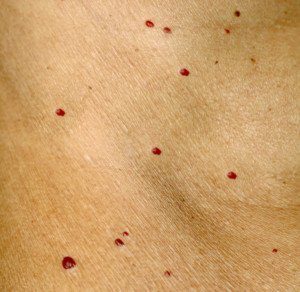
“Hormonal changes that occur in pregnancy can cause new moles to arise and moles to change” in the vaginal area or elsewhere, says Dr. Jennifer Gordon, who is board certified by the American Board of Dermatology; she practices at Westlake Dermatology located in Austin, Texas.
Dr. Gordon adds that sometimes a change in birth control or other medicines and conditions can result in the appearance of new moles, including in the area of the vagina.
The skin near the vagina is not exempt from developing pigmented lesions.
Dr. Gordon points out that “there are many other growths that can look like moles that occur with pregnancy (skin tags, angiomas, etc.) that are benign, and often the changes that occur with moles are often benign — but not always.”
New and Changing Moles after Age 30
“New and changing moles are more worrisome after the age of 30, but we do take it with a grain of salt during pregnancy,” says Dr. Gordon.
“That being said, atypical-appearing moles are treated the same whether you are pregnant or not and regardless of location, so new moles should be evaluated by your dermatologist during pregnancy.”
An angioma is a vascular network and may be the size of the period at the end of this sentence.

Angiomas. Shutterstock/Timonina
They can even be smaller, or may be a few millimeters in diameter.
They are bright to medium reddish (though they may appear light brownish depending on the room’s light) and can be plentiful, especially on the back, chest, stomach, shoulders and upper arms, but are perfectly harmless.
When you do your monthly skin exams of moles, whether you are pregnant or not, make sure to include the area of your vagina, and that means moving the pubic hair about to see if there are any hidden spots on the skin.



























